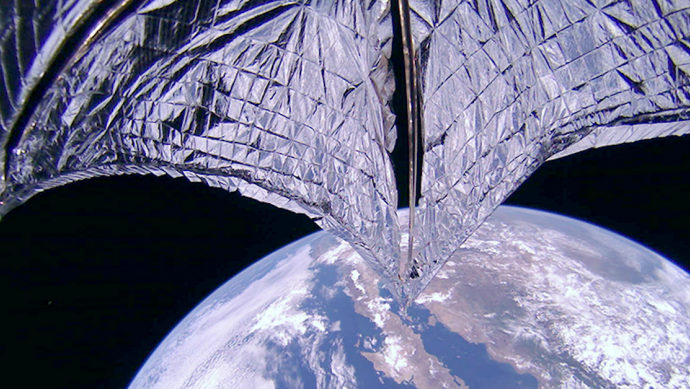The Planetary Society’s solar sail was successfully deployed. Now we have the images to prove it.
Source: Interesting Engineering
The Planetary Society has released images and footage confirming the full deployment of LightSail 2’s historic solar sail.
In a blog post, they said: “The Planetary Society’s LightSail 2 spacecraft has successfully deployed the large, aluminized Mylar sail it will use to raise its orbit solely with sunlight.”
Sailing on sunlight
Sent up to space roughly a month ago on a SpaceX Falcon Heavy rocket, the Planetary Society team had been taking readings of the LightSail 2 spacecraft to make sure it was ready to deploy its solar sail.
Two days ago, the team confirmed the sail had been deployed, and now we have photographic evidence to go with that announcement.

Video footage was also shared on the Planetary Society’s blog post, showing the sail deployment as it happened:

Two separate fish eye cameras filmed the sail unfurling from different angles.
The above and below footage are running at approximately 100 times the actual speed at which deployment took place. The video was also de-distorted and color corrected after retrieval from the spacecraft.

Solar orbit raising
The LightSail 2 spacecraft is being propelled by the continual acceleration of photons from sunlight; the mission aims to demonstrate solar propulsion as a viable method of travel for small satellites.
As shown in the animation below, The Planetary Society’s solar sail will be turned 90 degrees on each orbit. As it approaches the sun, it turns away from the solar rays, stopping it from being pushed by sunlight.
As it moves away from the sun, it harnesses the power of photons from sunlight to slowly raise its orbit.

“Yesterday, we successfully set sail on beams of sunlight,” said Bill Nye, CEO of The Planetary Society in the Planetary Society post.
Nye also took to Twitter to thank the backers that have made the solar space sailing venture possible: Bill Nye’s twitter
The project, which has made Carl-Sagan’s dream of solar propulsion come true, will now be focused on observations of the solar sail’s properties and capabilities.

The spacecraft is set to orbit Earth for roughly a year before atmospheric drag causes it to dip and burn up as it re-enters the atmosphere.

































Leave a Comment
You must be logged in to post a comment.